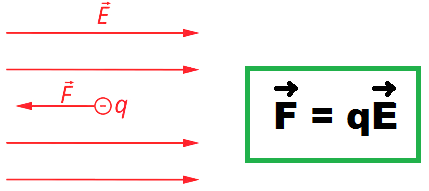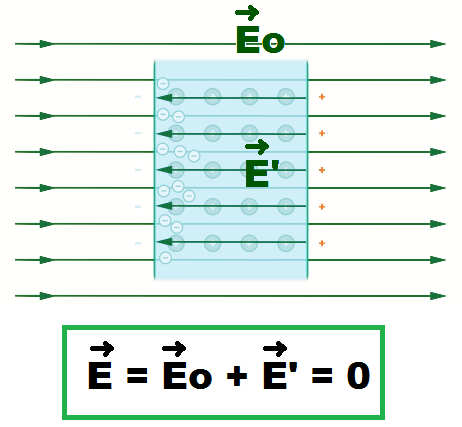Conditions for the existence of electric current
To begin with, let's answer the question of what is electric current. A simple tabletop battery does not generate current by itself. And a flashlight lying on a table won't create current through its LEDs just like that for no reason at all. For current to appear, something has to flow somewhere, at least start moving, and for that the circuit of the flashlight's LEDs and the battery has to close. Not for nothing, in the old days electric current was compared to the movement of a certain charged liquid.
In fact, we now know this electricity — this is the directed movement of charged particles, and that a closer analogue to reality would be a charged gas — a gas of charged particles moving under the action of an electric field. But first things first.

Electric current is the directed movement of charged particles
So, electric current is the movement of charged particles, but even the chaotic movement of charged particles is also movement, but still not current.Likewise, fluid molecules that are in thermal motion all the time do not create currents because the total displacement of the entire volume of fluid at rest is exactly zero.
For fluid flow to occur, overall motion must occur, that is, the overall motion of the fluid molecules must become directed. Thus, the chaotic movement of the molecules will be added to the directed movement of the entire volume, and a flow of the entire volume of the liquid will occur.
The situation is similar with electric current — the directed movement of electrically charged particles is an electric current. The speed of thermal movement of charged particles, for example, in metal, is measured in hundreds of meters per second, but in directional movement, when a certain current is set in the conductor, the speed of the general movement of particles is measured in parts and units of millimeters per second.
So, if a direct current equal to 10 A flows in a metal wire with a cross section of 1 sq. Mm, then the average speed of the ordered movement of electrons will be from 0.6 to 6 millimeters per second. This will already be an electric shock. And this slow movement of electrons is enough for a wire, for example, of nichrome, to heat up well, obeying The Joule-Lenz law.
Particle velocity is not the propagation velocity of an electric field!
Note that the current starts in the wire almost instantaneously throughout the entire volume, that is, this "motion" spreads along the wire at the speed of light, but the movement of the charged particles themselves is 100 billion times slower. You can consider the analogy of a pipe with liquid flowing through it.
Moving along a pipe 10 meters long, for example water.The speed of water is only 1 meter per second, but the flow does not spread at the same speed, but much faster, and the speed of spread here depends on the density of the liquid and its elasticity. Thus, the electric field propagates along the wire at the speed of light, and the particles begin to move 11 orders of magnitude slower. See also: Speed of electric current

1. Charged particles are necessary for the existence of electric current
Electrons in metals and in vacuum, ions in electrolyte solutions — serve as charge carriers and ensure the presence of current in various substances. In metals, electrons are very mobile, some of them can move freely from atom to atom, like a gas filling the space between the nodes of a crystal lattice.
In electron tubes, electrons leave the cathode during thermionic radiation, rushing under the action of an electric field to the anode. In electrolytes, molecules break up in water into positively and negatively charged parts and become free of charge carrier ions in electrolytes. That is, wherever an electric current can exist, there are free charge carriers that can move electric field… This is the first condition for the existence of electric current — the presence of free charge carriers.

2. The second condition for the existence of an electric current is that external forces must act on the charge
If you now look at a wire, let's say it's a copper wire, then you can ask yourself: what does it take for an electric current to occur in it? There are charged particles, electrons, they are able to move freely.
What will make them move? An electrically charged particle is known to interact with an electric field. Therefore, an electric field must be created in the wire, then a potential will arise at each point of the wire, there will be a potential difference between the ends of the wire, and the electrons will move in the direction of the field — in the direction from «-» to «+», that is in a direction opposite to the electric field strength vector. The electric field will accelerate the electrons, increasing their (kinetic and magnetic) energy.
As a result, if we consider an electric field simply applied externally to the wire (we placed the wire in an electric field along the lines of force), then electrons will accumulate at one end of the wire and a negative charge will appear at that end, and since the electrons are moved from the other end of the wire, then there will be a positive charge on it.
As a result, the electric field of a conductor charged by an externally applied electric field will be in such a direction as to weaken the external electric field from its action.
The process of redistribution of charges will continue almost instantaneously and after its completion the current in the wire will stop. The resulting electric field inside the conductor will become zero, and the force at the ends will be equal in magnitude but opposite in direction to the electric field applied externally.
If the electric field in the conductor is created by a direct current source, for example, a battery, then such a source will become a source of external forces for the conductor, that is, a source that will create a constant EMF in the conductor and maintain the potential difference.Obviously, in order for the current to be maintained by an external force source, the circuit must be closed.
